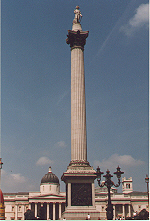
Nelson's Column
Charlie Nelson's Blog
Earthquake Seasons
Charlie Nelson
16 March 2011
There are more things in heaven and earth, Horatio,
than are dreamt of in your philosophy.
William Shakespeare
In the wake of the 11 March 2011 tragic major earthquake in Japan, there has been a flurry of suggestions that the sun or the moon may have some influence on the timing of earthquakes. Most, if not all, seismologists and astrophysicists interviewed since have denied any connection (see the footnote for an example). But the evidence suggests that there is indeed a connection.
I analysed a list of the 15 largest earthquakes, available at the US Geological Survey website (http://earthquake.usgs.gov/earthquakes/world/10_largest_world.php). I augmented this list with the 11 March 2011 earthquake. All have a magnitude of 8.5 or greater. The earliest earthquake on the list happened in 1906.
The chart shows how these major earthquakes are distributed by month of occurrence.

One-half of these earthquakes occurred in just two consecutive months – February and March. The probability that such a concentration could happen by a fluke is 0.002, or one chance in 500!
None of the earthquakes occurred in the two consecutive months of June and July. The probability that this could happen by a fluke is 0.054, or just under one chance in 20.
Clearly it is very unlikely that such a pattern is a chance event.
The most likely cause is the variation in the distance of the earth from the sun during the year. The earth’s orbit is elliptical and the closest approach to the sun occurs in early January (perihelion) while the farthest approach occurs in early July (aphelion). The earth is 147.1 million kilometres from the sun at perihelion and is 152.1 million kilometres from the sun at aphelion. Thus, there are slight variations in the gravitational force and the tidal influence of the sun throughout the year, with the maximum in early January and the minimum in early July.
There is a lag of about eight weeks between perihelion and maximum major earthquake activity which presumably reflects the time taken for the transmission mechanism to have maximum impact.
Note that there have been many years since 1906 when there were no major earthquakes in February or March. For each month, there have been four major earthquakes in the 106 years – a probability of 0.038. But this is much higher than the probability for the other months, especially June and July.
Thus, the proximity of the earth to the sun is a necessary condition for a major earthquake. But it is not a sufficient condition. Additional conditions influencing the timing, and especially location, of major quakes would no doubt include such factors as the gradual build up of stress along fault lines.
If the sun has such an impact, it seems plausible that the moon may also have an impact because the tidal influence of the moon is more than double that of the sun. This possibility will be the focus of my research in the future.
The moon has a very complex orbit around the earth. The orbit is elliptical, with the closest approach to earth being about 360,000 kilometres and the farthest approach being about 406,000 kilometres (these distances vary over time). But the time between successive close approaches (perigee) is only 28 days and we have noted the lag of about eight weeks between perihelion and maximum major earthquake occurrence. In addition, the orientation of the elliptical orbit of the moon revolves over a period of 8.85 years (the lunar apse cycle). Furthermore, the orbit of the moon around the earth is offset by five degrees relative to the plane of the sun and earth. The orientation of this offset relative to the earth’s axis rotates over a period of 18.61 years (the lunar node cycle). Thus, any relationship between the moon’s orbit and the timing of major earthquakes is likely to be difficult to identify.
The lunar node cycle has a significant influence on rainfall in Melbourne and south eastern Australia more generally (see my article on predicting wet periods at www.rainfalloutlook.com.au).
While I am continuing my research into the timing of major earthquakes, I suggest this travel advice. If you are traveling to a region which is prone to major earthquakes, try to go in June and July and to avoid February and March.
It seems that Shakespeare has been right all along!
Footnote
A typical dismissal of the possibility that interactions between the earth and the sun and the moon appeared on the NASA webpage (accessed 17 March 2011):
http://science.nasa.gov/science-news/science-at-nasa/2011/16mar_supermoon/
Authored by Dr Tony Phillips, it says, in part:
Indeed, contrary to some reports circulating the Internet, perigee Moons do not trigger natural disasters. The "super moon" of March 1983, for instance, passed without incident. And an almost-super Moon in Dec. 2008 also proved harmless.
This is very poor logic for a scientist. I don't know whether super moons (one is to happen on 19 March 2011) influence the chances of a major earthquake but if they did, they would only increase the probability of a major earthquake and there would be a lag. To say that the last time we had a super moon did not coincide with a super earthquake does not prove that there is not a relationship. One would have to analyse what happened around dozens of super moons, not just one or two, to be able to form any conclusion.
And it may be that a super moon at new moon may be more influential than a super moon at full moon. And there will be several influential terrestrial factors too. Several drivers probably need to coincide to produce a major earthquake.